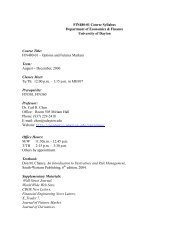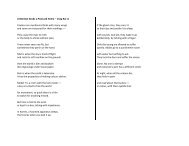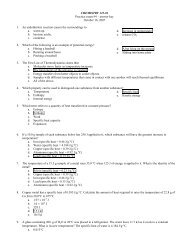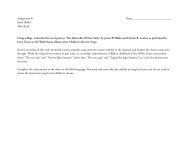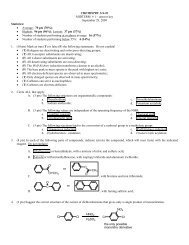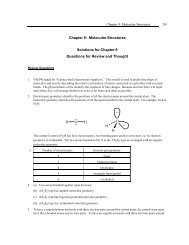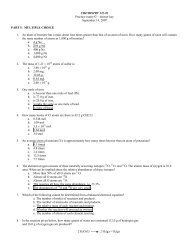Chap 26
Chap 26
Chap 26
Create successful ePaper yourself
Turn your PDF publications into a flip-book with our unique Google optimized e-Paper software.
234 CHAPTER 10<br />
ability to spread the monitoring costs over many borrowers, lower the average cost of monitoring<br />
borrowers.<br />
4. Depository institutions pool risk because they use funds obtained from many depositors to make<br />
loans to many borrowers. As a result, if a borrower defaults, no one depositor bears the entire loss<br />
because the loss is spread over all depositors. By spreading the risk, depository institutions are<br />
pooling risk.<br />
5. Anyone opening a bank, taking deposits, and making loans faces several restrictions or regulations.<br />
The restrictions can be divided into two general types: deposit insurance and balance sheet rules.<br />
Deposit insurance reflects the fact that the deposits generally are insured by the Federal Deposit<br />
Insurance Corporation (FDIC). Because of this insurance, banks face balance sheet regulations to<br />
minimize their incentive to make high-risk loans. The balance sheet regulations are: capital<br />
requirements (regulations giving the minimum amount of an owner’s own wealth that must be<br />
invested in the bank); reserve requirements (rules telling the minimum percentages of deposits that<br />
must be retained as currency or at the Federal Reserve); deposit rules (regulations restricting the<br />
types of deposits an intermediary can accept); and, lending rules (regulations limiting the<br />
proportions of different types of loans an intermediary can make).<br />
6. The financial deregulation that occurred in the 1980s made commercial banks more like other<br />
depository institutions primarily because the deregulation made other depository institutions more<br />
like banks. In particular, the deregulation eased constraints on the type of loans that other<br />
depository institutions (savings and loan associations and savings banks) could make and allowed<br />
these institutions the right to make types of loans similar to those made by commercial banks.<br />
7. Financial innovation is influenced by the economic environment, technology, and regulation. For<br />
instance, when the economic environment was such that interest rates were high, variable rate<br />
mortgages were developed that took some of the risk out of extending mortgage loans. Gains in<br />
technology, by lowering the cost of computing and communication, have lead to increased usage<br />
of credit cards. And regulation, by limiting the profits that intermediaries can earn, constantly spur<br />
intermediaries to develop ways to avoid regulation and thereby earn larger profits.<br />
8. Deregulation and innovation have changed the composition of money. Today new types of<br />
checking accounts (NOW and ATS) accounts are a large fraction of money even though these<br />
types of accounts did not exist in 1960. In M2, “traditional” savings deposits have declined, while<br />
new deposits, such as money market funds, have expanded.<br />
Page 243 (page 615 in Economics)<br />
1. Banks create deposits by making loans because part or all of the loans they make will be deposited<br />
in another bank. For instance, a student given a loan may purchase books at the local bookstore.<br />
The bookstore will then deposit the proceeds into its bank as part of the bookstore’s checking<br />
account. Thus the loan has created new deposits at the bookstore’s bank. The factors that limit the<br />
amount of deposits and loans a bank can make are the bank’s reserves and the required reserve<br />
ratio. A bank must maintain at least the amount of reserves set by the required reserve ratio and so<br />
if the bank does not have enough excess reserves—reserves above the amount that legally must be<br />
maintained—the bank cannot make additional loans.<br />
2. Though the manager does not see the entire process, nonetheless the loans the manager makes will<br />
create more deposits and hence more money. Point out to the manager that when he or she makes<br />
a loan, the deposits at his or her bank do not change. And, when the loan is spent, the recipient<br />
selling the goods or services that have been purchased will deposit part or all of the proceeds in his<br />
or her bank. When the recipient makes this deposit, the total amount of the nation’s deposits<br />
increase and, because deposits are part of the nation’s money, the quantity of money also increases.




